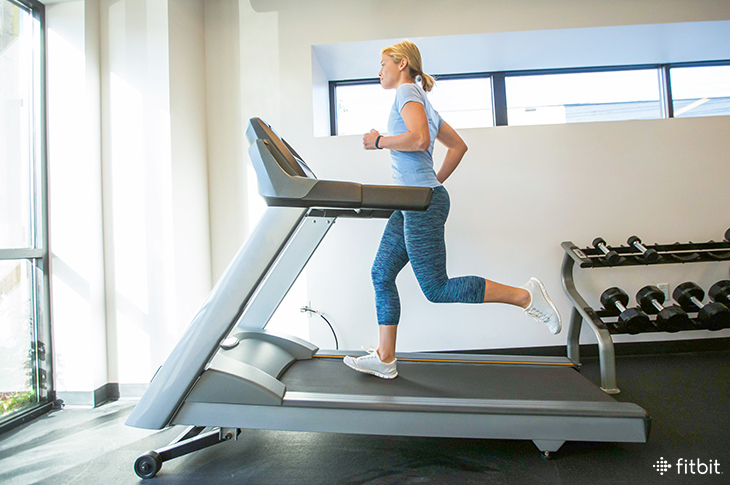
Colder, darker days might send you inside for your workouts, but that doesn’t mean you have to give up one of the biggest benefits of sweating it out outside: Hills. In fact, adding an incline to your indoor exercise sessions delivers major body benefits, says strength and conditioning specialist Neal Pire, Executive Director of the Greater New York Regional Chapter of the American College of Sports Medicine. “You can burn more calories in the same amount of time,” he says. “Upping the incline also changes the mechanics of your movement, so you can engage and improve different muscle groups.”
Adding “hills” to indoor workouts also keeps things interesting, says exercise physiologist Cynthia Geraud, owner of Get Fit, Get Life! Personal Training in Denver, Colorado. “Manually adjusting the incline or resistance on an indoor machine can make it more fun.”
Here are three ways to bring the hills inside so you can get the most out of your cardio sessions, whether you’re using a treadmill, elliptical machine, or stationary bike.
Treadmill: Run or Walk Up a Long Hill
After warming up for five to 10 minutes at an easy speed, continue at that speed—whether walking or running—and increase the incline on the treadmill until it feels moderately challenging. This is usually around 5% to 8% for most people. Remain at that incline for the length of your workout (20 to 40 minutes). Your heart rate should climb quickly into the cardio zone, and remain there while your legs get a low-impact strength workout. “You actually reduce your chance of injury when you increase the incline on a treadmill, because you’re reducing the impact on joints,” Pire says.
Cool down for five minutes, slowing the treadmill to a moderate walking pace, and gradually lowering the incline every 30 to 45 seconds until it’s flat.
Elliptical Machine: Take Your Steps Up and Down
All elliptical machines allow you to increase resistance, while some can also change the slope of your steps. Adjusting the slope is more effective at changing the muscles involved, but either way, you’re going to get a better workout by mixing things up. Geraud recommends creating a ladder workout. Start at an easy to moderate (and flat) level to warm up for 5 to 10 minutes. Then increase the incline or the resistance one percent every minute until you reach your maximum level. You’ll know you’re there either by checking your heart-rate-enabled Fitbit tracker to see if your heart rate is in the peak zone, or if you can only hold the intensity for 30 to 60 seconds. “You’ll only have to endure 30 seconds or a minute at the top end, and then you get a break.” says Geraud. After you reach your peak, step back down, lowering the intensity or incline one percent every minute, until you reach your starting level again. Your total workout after your warm-up should last about 20 minutes.
Stationary Bike: Ride Short, Steep Hills
The indoor bike, which uses changing resistance to simulate hills, is a great place to do an interval workout: You can get short, intense bouts separated by rest periods—all with no impact, and you’ll really challenge your legs. Start by spinning at an easy resistance for about five minutes or until you are warm. Then crank up the intensity to a level that you can hold while working hard for 30 to 60 seconds. “Make it comfortably uncomfortable,” Geraud says. Translation: It should feel tough—but not hurt. If you’re a more seasoned rider, Geraud recommends coming up out of the saddle and standing on the pedals to use different muscles during the hard bursts. After maintaining the tough intensity, dial the resistance down for a 90-second to two-minute easy recovery ride. Your heart rate should come down to at least the low end of the cardio zone before you push again. This is the downhill ride before your next hill.
If you’re just starting out, ride four to five hard segments. More advanced riders can build up to 10.
This information is for educational purposes only and is not intended as a substitute for medical diagnosis or treatment. You should not use this information to diagnose or treat a health problem or condition. Always check with your doctor before changing your diet, altering your sleep habits, taking supplements, or starting a new fitness routine.

Can you recommend a decent home treadmill ?
Hey Dave, we don’t have any recommendations on home treadmills, but if you pop on over to our Fitbit Community, you can find users like yourself discussing the treadmill scene. Hope this helps!
Hello Jonathan, i think it’s an awesome post you have here. I’ve always believed indoor workout could be as effective as outdoors. I think Elliptical machines are awesome at achieving that. Thanks for the emphasis
Thanks for sharing your view!
Thanks for the comments, Joe. May your winter be fit and fun. Jonathan
Thank you for the stationary bike advise!
You’re welcome!
Hi i have used the HR fitpit and fit pit both are not giving me the acurate steps and distance i do on treadmill
Hi Nahed! If your hands are stationary while walking on a treadmill, your step count might be lower, because your hands are not moving in a motion as they normally would when walking/running. Our Fitbit trackers use a 3-axis accelerometer to understand your motions. The algorithm is designed to look for motion patterns most indicative of people walking/running.
To learn more about Fitbit tracker accuracy, take a look at this help article.